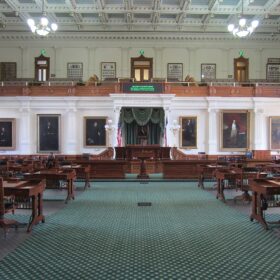US distributed solar grew 5.4 GW in 2024
A study by the Institute for Local Self-Reliance (ILSR) found that five US states increased their distributed solar capacity by more than 30% in 2024, with one state growing by 50% and another doubling its capacity.
Texas Senate passes anti-solar, wind bill
The bill places permit restrictions, fees and new regulatory requirements for solar and wind projects.
Solar cells not exempt from US tariffs despite media reports
Solar cells are not exempt from the recent US reciprocal import tariffs, and recent reporting by major media outlets appears to be a misinterpretation of government documentation.
U.S. researchers developing photovoltaic dual-axis canopy
The “morphing skin” would track sunlight and have the flexibility and surface area to wrap across large surfaces, such as buildings and stadiums.
Acoustics for solar harmony
Fixing a project’s acoustics can be costly and difficult, but easily avoided if considered early in the project’s development.
California introduces bill to accelerate heat pump adoption
With California projected to fall two million installations short of its 2030 target, the bill aims to make installing heat pumps and HVAC systems faster and easier.
US total solar capacity to reach 182 GW by end of 2026
The US Energy Information Administration (EIA) says cumulative solar installations are expected to double from 91 GW to 182 GW from the end of 2023 to the end of 2026. Meanwhile, battery energy storage capacity is expected to grow 70% in 2025 alone.
Solar Stack launches US-made penetration-free conduit mounts
Solar Stack has launched two US-made, adhesive-based conduit mounts that eliminate the need for roof penetrations in solar installations.
Waaree Energies to double its solar module manufacturing in Texas
This expansion comes at a critical time for the U.S. solar industry with much uncertainty around supply chains and pressure to increase domestic output.
New York’s largest solar power plant moves forward
The 500 MW Cider Solar project received the first permit of its kind issued by the New York Office of Renewable Energy Siting and Transmission.










